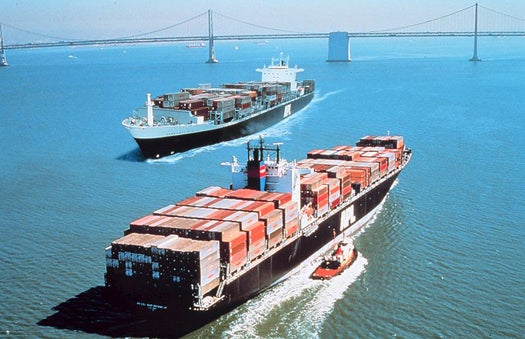Mimicking the Hydrophobic Water Fern Could Lead to Faster, More Efficient Ships
If you’re an ocean-transiting container ship, friction is a drag. The bigger your load, the more energy it takes to...

If you’re an ocean-transiting container ship, friction is a drag. The bigger your load, the more energy it takes to propel you through the water, and that means increased fuel costs and increased emissions. But by mimicking the hydrophobic characteristics of the water fern, researchers at the University of Bonn think they can create container ships that move faster – and more efficiently – from port to port.
Materials scientists long ago started producing synthetic hydrophobic materials. But while some of them work very well, they aren’t very durable in moving water, lasting only a few hours. The water fern, however, is superhydrophobic. When completely immersed in water it still remains dry thanks to small, fibrous hairs that hug a thin cushion of air close to the plant’s body that water simply can’t penetrate, even if the fern is submerged for weeks.
But the water fern’s hydrophobia wouldn’t be possible without a certain degree of hydrophilia. The tips of the hairs actually share a strong attraction with water. When submerged, water molecules rush to the hairs which essentially “staple” the water molecules to the plant, enveloping the fern and refusing to let the air cushion escape. It’s this discovery that could lead to a serious breakthrough for superhydrophobic synthetics.
The researchers believe they could design container ships with hulls that exhibit similar hydrophobic properties, keeping a slight cushion of air between ocean and ocean-liner and cutting down on fuel costs and emissions by ten percent. Considering that global shipping emitted 847 million tons of CO2 in 2007 alone (that’s nearly 3 percent of man-made emissions that year), that’s no small reduction. The researchers estimate such technology could trim a full percent off global fuel consumption.